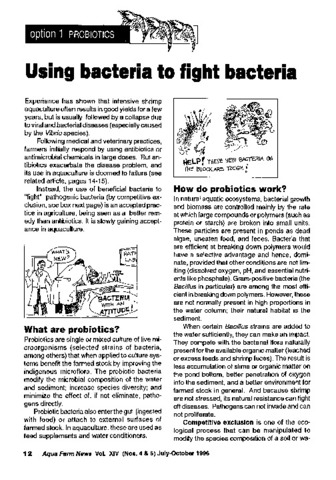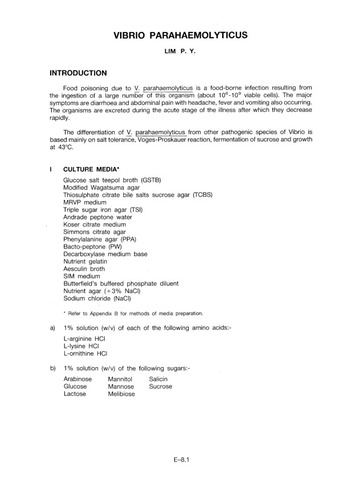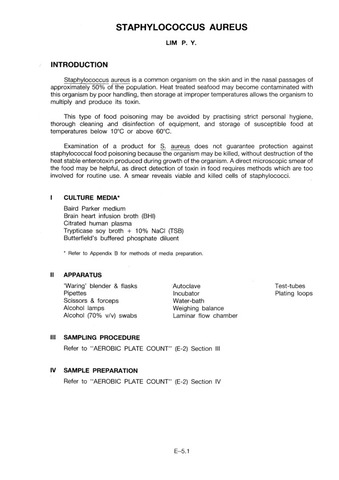Using bacteria to fight bacteria
Share
Abstract
The paper discusses about probiotics and its possible use in shrimp aquaculture. The paper also provides information on how the probiotics work and presents the preliminary results of the field tests conducted by Southeast Asian Fisheries Development Center, Aquaculture Department and BIOPOND Systems. The general characteristics of Bacillus are also discussed.
Suggested Citation
Southeast Asian Fisheries Development Center, Aquaculture Department (1996). Using bacteria to fight bacteria. Aqua Farm News , 14(4-5), 12-13, 17, 27. http://hdl.handle.net/10862/2431
Subject
Collections
- Aqua Farm News [286]
Related items
Showing items related by title, author, creator and subject.
-
Microbial procedure: Vibrio parahaemolyticus
Lim, Pang Yong (Marine Fisheries Research Department, Southeast Asian Fisheries Development Center, 1987)Food poisoning due to Vibrio parahaemolyticus is afood-borne infection resulting from the ingestion of alarge number of this organism (about 106-109 viable cells). The major symptoms are diarrhea and abdominal pain with ... -
Microbial procedure: Vibrio cholera
Lim, Pang Yong (Marine Fisheries Research Department, Southeast Asian Fisheries Development Center, 1987)Cholera is an acute specific infection caused by the organism, Vibrio cholera. Diagnosis may be confirmed by the presence of large numbers of the comma-shaped bacilli on direct microscopic examination of a fecal or vomitus ... -
Microbial procedure: Staphylococcus aureus
Lim, Pang Yong (Marine Fisheries Research Department, Southeast Asian Fisheries Development Center, 1987)Staphylococcus aureus is a common organism on the skin and in the nasal passages of approximately 50% of the population. Heat-treated seafood may become contaminated with this organism by poor handling, then storage at ...





